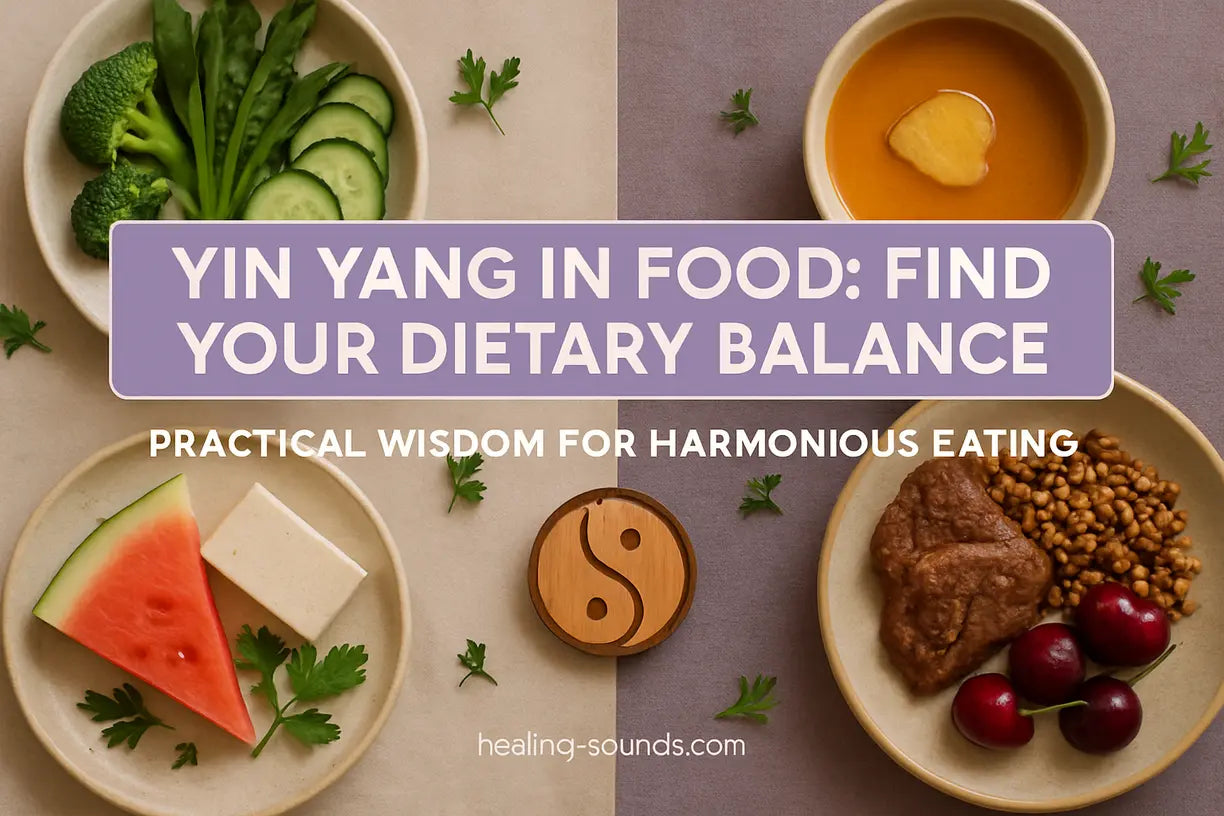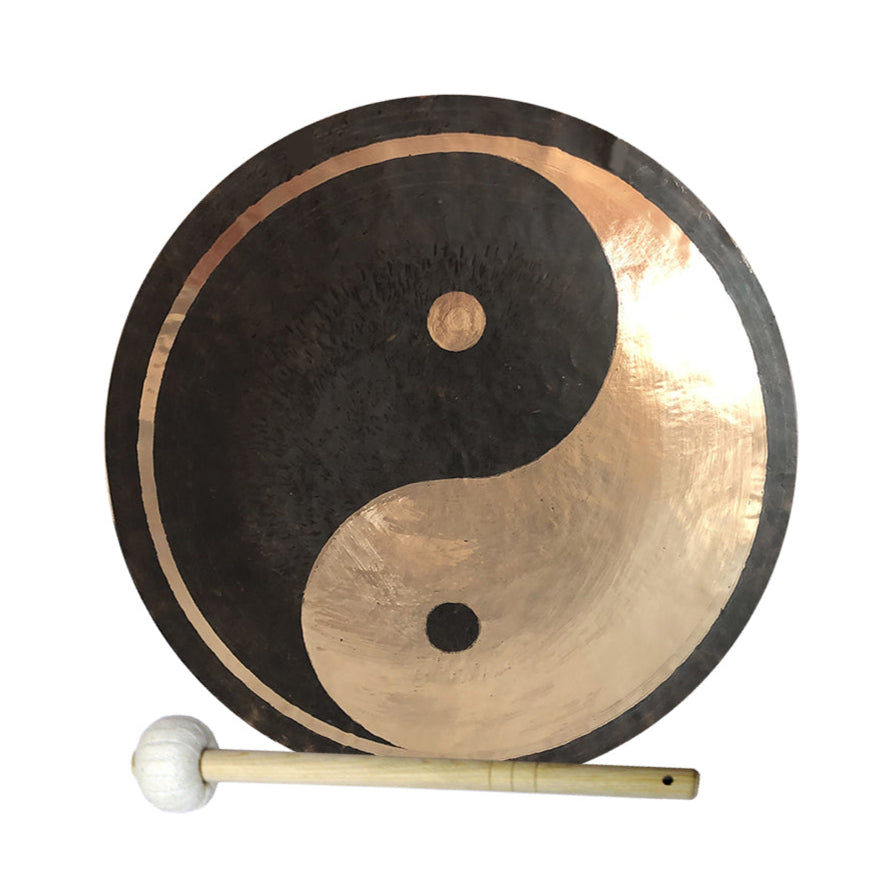Ein leerer Teller ist eine leere Leinwand. Doch in unserem geschäftigen modernen Leben wirkt die Auswahl unserer Zutaten oft eher chaotisch als kreativ. Wir zählen Kalorien, verfolgen Makros und jagen Superfoods hinterher, doch wahre Ausgewogenheit bleibt oft schwer fassbar. Was, wenn das Geheimnis strahlender Gesundheit kein neuer Trend, sondern eine uralte Philosophie ist? Das Prinzip von Yin und Yang in der Ernährung , das in der Traditionellen Chinesischen Medizin (TCM) verwurzelt ist, bietet einen zeitlosen Weg, Ihren Körper von innen heraus zu harmonisieren. Es geht nicht um Einschränkung; es geht darum, die subtilen Energien unserer Ernährung zu verstehen, um ganzheitliches Wohlbefinden zu erreichen.
Dieser Leitfaden beleuchtet die tiefe Weisheit der Yin-Yang-Diät. Sie lernen, über die reine Ernährung hinauszugehen und Lebensmittel als Quelle energetischen Gleichgewichts zu betrachten. Wir erkunden, wie Sie Yin- und Yang-Lebensmittel erkennen, eine Yin-Yang-Lebensmitteltabelle verwenden und diese traditionellen Prinzipien auf Ihre täglichen Mahlzeiten anwenden. So verändern Sie Ihre Beziehung zu Lebensmitteln und fördern eine tiefere Verbindung zu den Bedürfnissen Ihres Körpers.
Die alte Philosophie von Yin und Yang in der Ernährung
Im Kern geht es bei der Yin-Yang-Philosophie um dynamisches Gleichgewicht. Sie geht davon aus, dass das Universum von zwei gegensätzlichen, sich jedoch ergänzenden Kräften beherrscht wird. Yin steht für kühlende, feuchte, passive und weibliche Energie , während Yang für wärmende, trockene, aktive und männliche Energie steht . Das eine kann ohne das andere nicht existieren, und ihr Zusammenspiel schafft Harmonie.
In der Traditionellen Chinesischen Medizin bezieht sich dieses Konzept direkt auf unsere Gesundheit und die Lebensmittel, die wir zu uns nehmen. Jedes Lebensmittel besitzt eine angeborene energetische Eigenschaft – es ist entweder überwiegend Yin, überwiegend Yang oder relativ neutral. Dabei geht es nicht um den Nährwert im westlichen Sinne, sondern darum, wie sich ein Lebensmittel auf die innere Energie des Körpers ( Qi) auswirkt. Ein Übermaß an Yin kann zu Trägheit und Wassereinlagerungen führen, während sich zu viel Yang in Entzündungen oder Unruhe äußern kann. Ziel einer ausgewogenen Ernährung ist es, mit Yin- und Yang-Lebensmitteln Ungleichgewichte auszugleichen, Ihre individuelle Konstitution zu unterstützen und sich mit der natürlichen Welt um Sie herum in Einklang zu bringen.
Yin- und Yang-Lebensmittel erkennen: Ein umfassender Leitfaden
Zu verstehen, welche Lebensmittel Yin- oder Yang-Energie tragen, ist der erste Schritt zu einem ausgewogenen Teller. Die Einteilung hängt von verschiedenen Faktoren ab, darunter Anbaugebiet, Wassergehalt, Geschmacksprofil und Zubereitungsart.
Eigenschaften von Yin-Lebensmitteln (kühlend und beruhigend)
Yin-Lebensmittel sind bekannt für ihre Fähigkeit, den Körper zu kühlen, die Flüssigkeitsproduktion zu fördern und eine beruhigende Wirkung zu haben. Sie sind wichtig für die Flüssigkeitszufuhr und den Ausgleich überschüssiger Yang-Energie. Denken Sie an Lebensmittel, die weich und feucht sind und oft im Schatten, Dunkel oder Kühlen wachsen.
- Gemüse: Gurke, Sellerie, Spinat, Pak Choi, Radieschen, Spargel und Seetang.
- Obst: Wassermelone, Bananen, Birnen, Erdbeeren und Zitrusfrüchte wie Grapefruit.
- Proteine und Getreide: Tofu, Krabben, Muscheln, Hirse und Gerste.
- Getränke: Grüner Tee und Sojamilch.
Im Allgemeinen gelten grüne Lebensmittel oder Lebensmittel mit hohem Wassergehalt als Yin. Sie sind besonders bei heißem Wetter oder für Personen, die zu Hitzegefühlen oder Dehydrierung neigen, von Vorteil.
Eigenschaften von Yang-Lebensmitteln (wärmend und energetisierend)
Yang-Lebensmittel bewirken das Gegenteil: Sie wärmen den Körper, regen die Durchblutung an und geben ihm einen Energieschub. Sie sind ideal, um Kälte zu bekämpfen, Feuchtigkeit zu vertreiben und ein träges System zu beleben. Yang-Lebensmittel sind oft reichhaltig, würzig und wachsen in sonnigen, warmen Umgebungen.
- Gemüse: Zwiebeln, Knoblauch, Lauch, Frühlingszwiebeln und Kürbisse.
- Obst: Kirschen, Mangos und Pfirsiche.
- Proteine und Getreide: Lamm, Rind, Huhn, Garnelen, Eier und Hafer.
- Gewürze und Kräuter: Ingwer, Zimt, Nelken und Cayennepfeffer.
Diese Lebensmittel eignen sich perfekt für die kälteren Monate oder für alle, die sich oft kalt oder müde fühlen oder einen Energieschub brauchen. Ihre wärmende Wirkung hilft, den Stoffwechsel des Körpers anzukurbeln.

Ihr visueller Leitfaden: Die Yin-Yang-Lebensmitteltabelle
Um diese Konzepte leichter anwenden zu können, ist eine Yin-Yang-Ernährungstabelle ein wertvolles Hilfsmittel. Sie ordnet Lebensmittel entlang eines Spektrums von Yin bis Yang ein, mit einer neutralen Kategorie in der Mitte. Neutrale Lebensmittel wie Reis, Karotten und Mais gelten als perfekt ausgewogen und sollten die Grundlage einer gesunden Ernährung bilden. Diese visuelle Referenz hilft Ihnen, Ihre Mahlzeiten schnell zu bewerten und sie besser an Ihre Bedürfnisse anzupassen. 
So bringen Sie Yin und Yang in Ihrer täglichen Ernährung ins Gleichgewicht
Ausgewogenheit bedeutet nicht, jede Mahlzeit 50/50 zu teilen. Es geht darum, dynamisch auf den Körper zu hören und die Ernährung an die persönliche Konstitution, das Klima und den aktuellen Gesundheitszustand anzupassen. Wie Experten der Traditionellen Chinesischen Medizin erklären, liegt der Fokus darauf, mit der Zeit Harmonie zu schaffen.
Das Prinzip der Ausgewogenheit und Mäßigung
Das Grundprinzip besteht darin, Ungleichgewichte durch Lebensmittel auszugleichen. Wenn Sie sich träge und kalt fühlen (überschüssiges Yin), nehmen Sie mehr wärmende Yang-Lebensmittel zu sich. Wenn Sie sich aufgeregt, gereizt und überhitzt fühlen (überschüssiges Yang), konzentrieren Sie sich auf kühlende Yin-Lebensmittel. Auch die Zubereitungsmethoden beeinflussen die Energie eines Lebensmittels. Dämpfen und Kochen verstärken die Yin-Eigenschaften, während Braten, Grillen und Rösten die Yang-Energie hinzufügen.
- Kombinieren Sie einen kühlenden Salat (Yin) mit gegrilltem Hähnchen (Yang).
- Fügen Sie einer feuchtigkeitsspendenden Gemüsesuppe (Yin) wärmenden Ingwer (Yang) hinzu.
- Servieren Sie scharfes Essen (Yang) mit einer Beilage gedämpftem Reis (neutral), um ein Gleichgewicht zu schaffen.
Essen im Einklang mit den Jahreszeiten
Eine einfache, aber wirkungsvolle Methode, Yin-Yang-Ernährung zu praktizieren, besteht darin, Ihre Ernährung an die Jahreszeiten anzupassen. Die Natur liefert genau das, was unser Körper zu verschiedenen Jahreszeiten braucht.
- Sommer (Yang-Jahreszeit): Essen Sie mehr kühlende Yin-Lebensmittel wie Wassermelone, Gurke und Salat, um der Hitze entgegenzuwirken.
- Winter (Yin-Jahreszeit): Essen Sie mehr wärmende Yang-Lebensmittel wie Wurzelgemüse, herzhafte Suppen und Gewürze, um innere Wärme und Widerstandskraft aufzubauen.
Dieser intuitive Ansatz hält Ihre innere Energie im Einklang mit der äußeren Umgebung und fördert so das ganze Jahr über Ihre Widerstandsfähigkeit und Ihr Wohlbefinden.

Schaffen Sie eine harmonische Umgebung für achtsames Essen
Die Prinzipien von Yin und Yang wirken sich nicht nur auf den Teller aus, sondern auch auf die Atmosphäre beim Essen. Eine chaotische Umgebung kann die Verdauung und die Aufnahme der Lebensenergie der Nahrung stören. Die Schaffung eines ruhigen, ausgeglichenen Raums für Ihre Mahlzeiten ist daher genauso wichtig wie das Essen selbst. Das kann so einfach sein wie das Weglegen des Telefons, das Anzünden einer Kerze oder sogar das Einbeziehen von Klängen. Die resonanten Schwingungen eines Gongs können stagnierende Energien lösen und ein Gefühl der Harmonie vermitteln, wodurch Körper und Geist auf die Aufnahme von Nahrung vorbereitet werden.
12 bis 48 Zoll Yin-Yang-Gong für Klangbad-Übungen
$249.90
Bringen Sie mit diesem wunderschön gefertigten chinesischen Gong die Harmonie von Yin und Yang in Ihren Meditationsraum.
Produkt entdeckenVerbessern Sie Ihre achtsamen Essrituale
Verbessern Sie Ihre Praxis mit diesen Tools
$29.99
$39.99
Bringen Sie die Energie in Ihrer Küche oder Ihrem heiligen Raum mit einem Räucherstäbchenhalter aus natürlichem Kristall für Reinigungsrituale ins Gleichgewicht. Mehr erfahren ➔
$98.90
$141.90
Verleihen Sie Mahlzeiten oder achtsamen Momenten mit diesem hochwertigen Kalimba-Daumenklavier aus Walnussholz sanfte, harmonisierende Klänge. Mehr erfahren ➔
Fazit: Ihr Weg zur Harmonie durch Essen
Die Prinzipien von Yin und Yang in der Ernährung zu berücksichtigen, ist eine transformative Reise zu ganzheitlicher Gesundheit. Es lädt Sie ein, aktiv an Ihrem eigenen Wohlbefinden mitzuwirken und Ihre Ernährung als wirksames Instrument zur inneren Harmonie zu nutzen. Indem Sie die energetischen Eigenschaften von Lebensmitteln verstehen, auf die individuellen Signale Ihres Körpers hören und sich an den Rhythmus der Jahreszeiten anpassen, können Sie einen Zustand lebendiger Ausgeglichenheit erreichen, der von innen heraus strahlt. Beginnen Sie im Kleinen, indem Sie die Yin- und Yang-Lebensmittel in Ihrer nächsten Mahlzeit identifizieren und Ihren Weg zu einem energiegeladeneren, zentrierteren und harmonischeren Leben beschreiten.
Häufig gestellte Fragen zu Yin und Yang in Lebensmitteln
Yin und Yang beziehen sich in der Ernährung auf die energetischen Eigenschaften der Traditionellen Chinesischen Medizin. Yin-Lebensmittel wirken kühlend, hydratisierend und beruhigend (z. B. Gurke, Wassermelone), während Yang-Lebensmittel wärmend, trocknend und energetisierend wirken (z. B. Ingwer, Lamm). Ziel ist es, diese Energien in Ihrer Ernährung für eine optimale Gesundheit auszugleichen.
Lebensmittel mit hohem Yin-Gehalt wirken typischerweise kühlend und haben einen hohen Wassergehalt. Beispiele hierfür sind Blattgemüse wie Spinat, Gemüse wie Sellerie und Gurken, Obst wie Bananen und Birnen sowie Proteine wie Tofu und Krabben. Sie eignen sich hervorragend, um den Körper mit Feuchtigkeit zu versorgen und überschüssige Hitze abzubauen.
Die Yin-Yang-Philosophie der Ernährung basiert auf der Überzeugung, dass zur Erhaltung der Gesundheit ein Gleichgewicht zwischen den komplementären Energien Yin (kühl/passiv) und Yang (warm/aktiv) erforderlich ist. Es geht nicht um gute oder schlechte Lebensmittel, sondern darum, Lebensmittel auszuwählen, die Ungleichgewichten im Körper entgegenwirken, die Konstitution unterstützen und sich an den Jahreszeiten orientieren, um Harmonie und Wohlbefinden zu fördern.
Tofu gilt als klassisches Yin-Lebensmittel. Er ist weich, hat einen hohen Wassergehalt und ist für seine kühlenden Eigenschaften bekannt. Dies macht ihn zu einer ausgezeichneten Wahl für ausgleichende Mahlzeiten mit Yang-Zutaten oder für Personen, die überschüssige Wärme aus dem Körper abführen müssen.
Sie können Yin und Yang ausgleichen, indem Sie auf Ihren Körper hören, saisonal essen (mehr Yin-Lebensmittel im Sommer, mehr Yang im Winter) und Lebensmittel in Ihren Mahlzeiten kombinieren. Kombinieren Sie beispielsweise ein wärmendes Yang-Protein wie Hühnchen mit kühlendem Yin-Gemüse wie Pak Choi. Berücksichtigen Sie auch die Zubereitungsmethoden: Dämpfen erhöht Yin, während Braten Yang erhöht.







